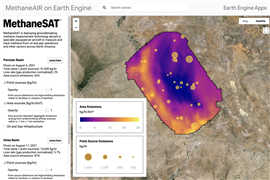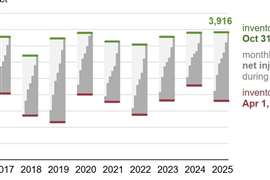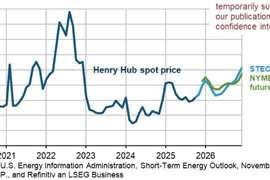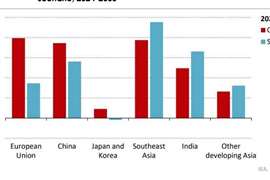Read this article in Français Deutsch Italiano Português Español
Methane identifying satellite launched
March 04, 2024
Data will be available directly to the public
 A new satellite focused on identifying methane emissions and sharing results with the public has been launched. (Image: MethaneSAT)
A new satellite focused on identifying methane emissions and sharing results with the public has been launched. (Image: MethaneSAT)
A new satellite focused on identifying methane emissions from oil and gas operations lifted off from Vandenberg Space Force Base in California.
The MethaneSAT satellite, which was aboard a SpaceX Falcon9 rocket, was designed to quantify total methane emissions over wide areas that other satellites can’t and identify large emitters in places they aren’t looking. Data from MethaneSAT will enable both companies and regulators to track emissions, and give stakeholders – citizens, governments, investors, and gas importers – free, near-real time access to the data, and the unprecedented ability to compare the results against emission goals and obligations. The satellite was designed by MethaneSat, a subsidiary of the Environmental Defense Fund (EDF).
“Cutting methane pollution from fossil fuel operations, agriculture and other sectors is the single fastest way to slow the rate of warming as we continue to decarbonize our energy systems,” said EDF President Fred Krupp. “To do that requires comprehensive data on this pollution on a global scale. MethaneSAT will show us the full scope of the opportunity by tracking emissions to their source.”
Circling the Earth 15 times a day, MethaneSAT will measure changes in methane concentrations as small as three parts per billion.
Interactive emissions data will be available to anyone directly from www.MethaneSAT.org and on Google Earth Engine, a geospatial data platform used by over 100,000 experts and analysts.
MethaneSAT was made possible entirely by the support of EDF donors and a partnership with the Government of New Zealand. Among the largest contributors to MethaneSAT are the Bezos Earth Fund, Arnold Ventures, the Robertson Foundation and the TED Audacious Project.
“Methane emissions have been overlooked and hard to detect for far too long,” said Dr. Kelly Levin, Chief of Science, Data and Systems Change at the Bezos Earth Fund. “MethaneSAT changes the equation, putting science and data front and center. From the sky, it can see what others can’t, helping good actors and holding bad actors accountable. The Bezos Earth Fund is proud to be a partner in this adventure.”
In December, EDF joined with Bloomberg Philanthropies, the International Energy Agency, RMI and the UN Environment Program’s International Methane Emission Observatory on a new, first-of-its-kind initiative to hold companies and governments more accountable for their methane management.
“You can’t manage what you can’t measure, and that’s certainly true when it comes to cutting methane, one of the biggest drivers of climate change,” said Michael R. Bloomberg, UN Secretary-General’s Special Envoy on Climate Ambition and Solutions and Founder of Bloomberg LP and Bloomberg Philanthropies. “Data from this satellite will help us to better measure methane emissions and target their sources, bringing more transparency to the problem, giving companies and investors the information they need to take action, and empowering the public to hold people accountable.”
In addition to parent organization EDF, MethaneSAT partners include Harvard University’s School of Engineering and Applied Sciences, the Smithsonian Astrophysical Observatory, and the New Zealand Space Agency. The combined mission team has over 70 experts worldwide with experience in spaceflight, remote sensing, and data analytics.
The satellite was built in Colorado by the Space & Mission Systems unit of BAE Systems, Inc. (formerly Ball Aerospace) and Blue Canyon Technologies.
MAGAZINE
NEWSLETTER

CONNECT WITH THE TEAM









